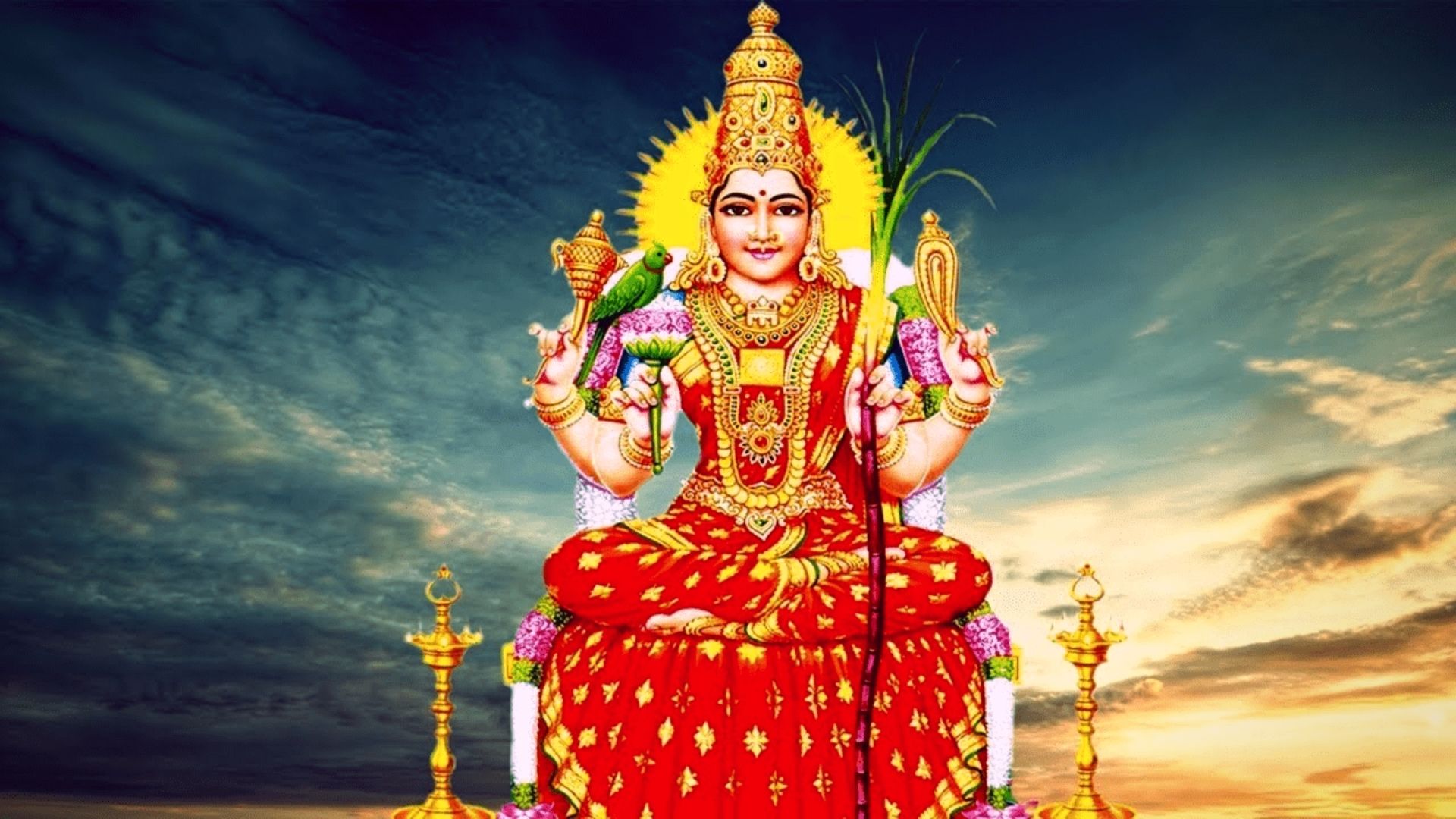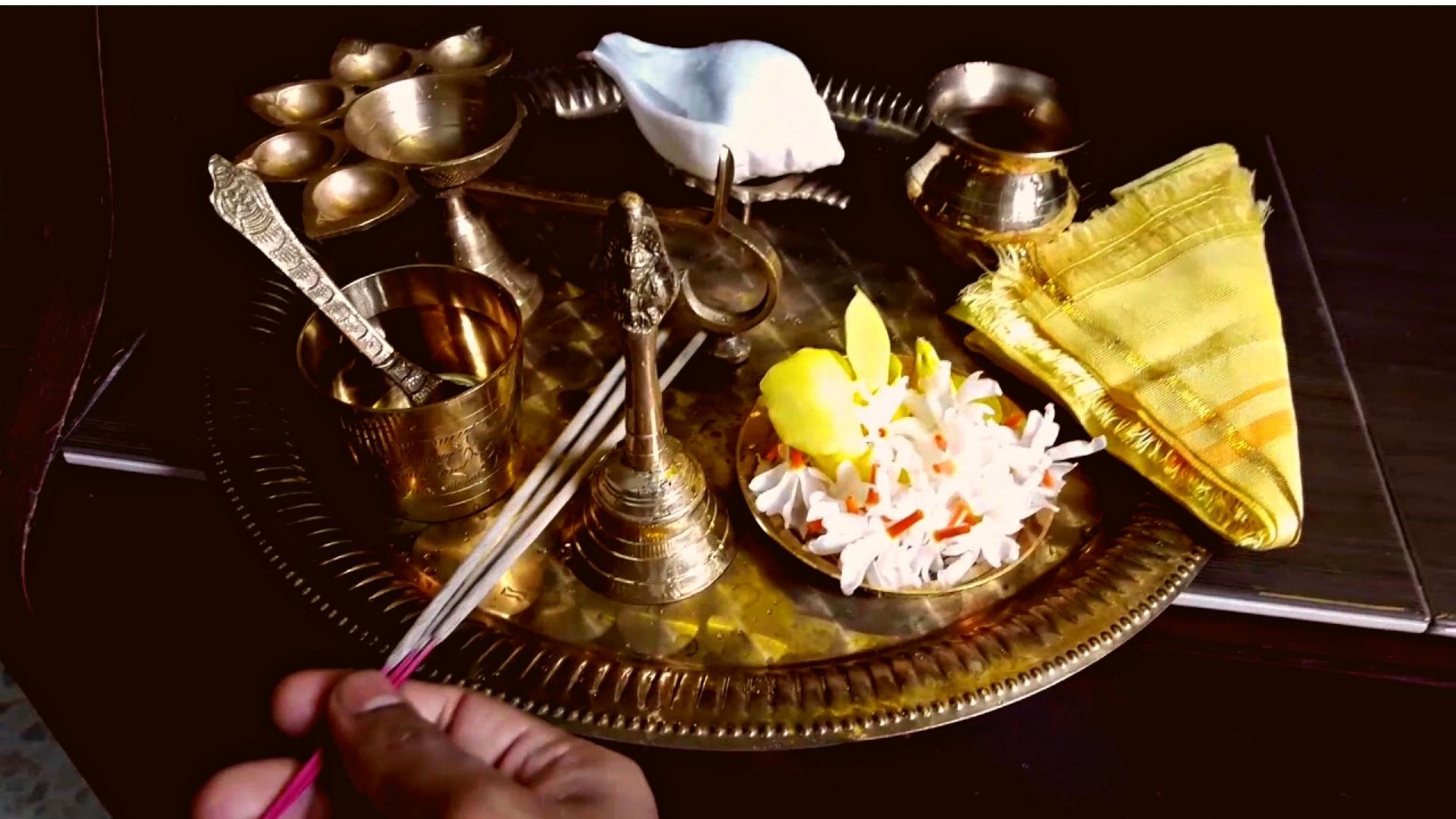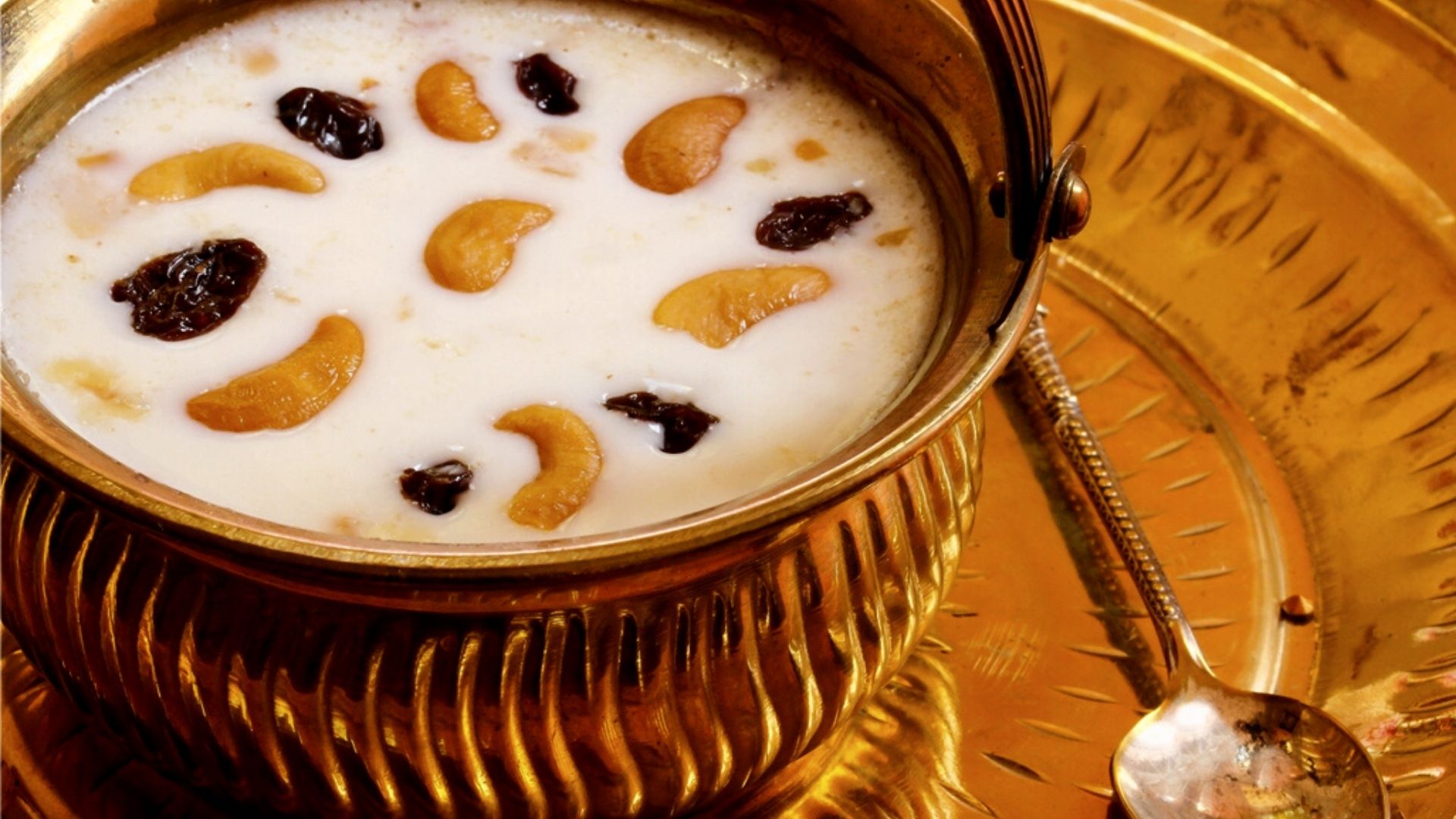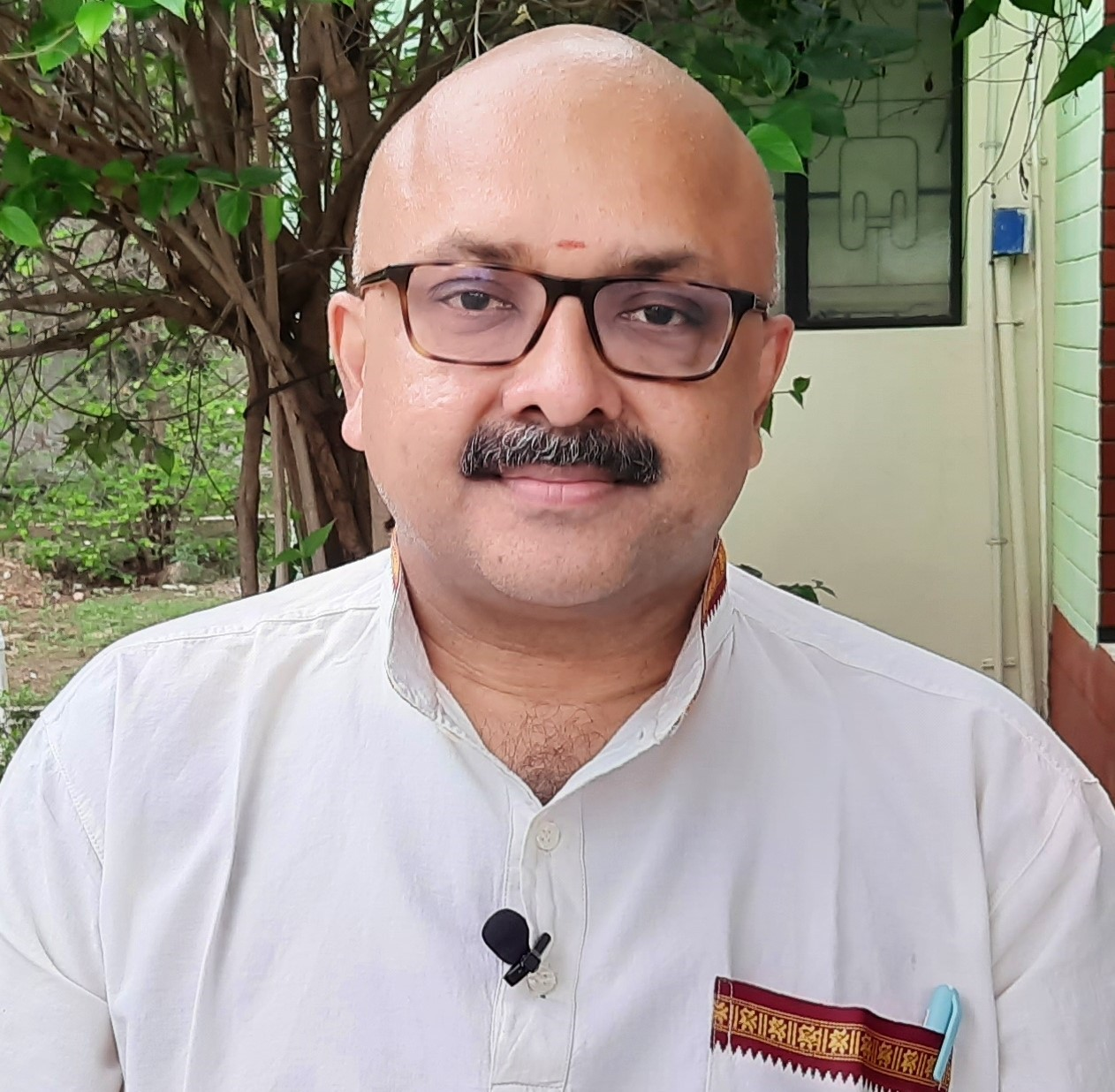The Pooja Room is the most important part of a home. Every Hindu or rather a modern Hindu should allot a space for the deities. Life is ephemeral but the deities are permanent. Each one of us is trying to seek glory and self gratification. The statement ' You live only once ' is ruling the roost these days. We find ourselves indulging every day. ' Kama or Indulgence ' among the Purusharthas (goals of life) is dominating our lives. Finally, it becomes a vicious circle. One finds it difficult to get out of it. The only place that can help us get out of the vicious circle of indulgence and desire is the Pooja Room.
One may wonder, how is why? Are we not having temples in our neighbourhood? Why do we need a Pooja Room? These are the oft asked questions. Let us try to answer these questions. A temple is a public place but a pooja room is a private place. Do we not have a living room for the family and a bedroom for ourselves? Does this not answer both the questions! Nowadays, a lot of international concepts are being brought in. Ikigai is one such concept. It is from Japan. One thinks of cleaning up the mind while cleaning a space.

We were similarly asked to clean up our mind while cleaning up the Pooja Room. All the rotten thoughts can be sent out. This exercise will have to be undertaken every day. The mind will get better over time. Our thoughts will get cleaner. This will result in inner beauty getting reflected on our face. A good personality will get constructed. This approach helps one to perform the prayers in a calm and composed manner. The power of good will be harvested thereafter. The Sri Lalitha Trisathi Pooja helps one to cultivate good habits. This will result in good thoughts.
Now that the Pooja Room has been made ready, it becomes important to get the items ready for the prayers. Let us first understand the background of this prayer. Years ago, Rishi Agastya was given the wonderful Sri Lalitha Sahasranamam by Hayagriva. Agastya became very happy, but he felt that there was more to it. He clung on to the feet of Hayagriva and requested him to share the most potent prayer. Hayagriva maintained silence and finally Lalitha Tripurasundari appeared physically and requested Hayagriva to share the ' Sarvapoorthikari ' Mantra i.e., Sri Lalitha Trisathi. Lopamudra , the wife of Agastya, had been a great devotee of Lalithambika and therefore Agastya became a suitable candidate who could harvest the secretive and powerful Sri Lalitha Trisathi.

Sri Lalitha Trisathi consists of 300 names of deities. It is based on the powerful syllables (Beejaksharams) connected with Lalithambika. The Beejaksharams are totally 15 in number. Therefore, the composition contains 20 names per Beejaksharam. One has to arrange a lot of flowers for this Pooja. Kumkumam is required for the Archana. This prayer can be done in the morning hours before having food or at the time of dusk. The lamps will have to be decorated with flower strands and a big kolam will have to be done in front of the pooja altar. An image or portrait of Lalthambika is placed in the vantage point.
The devotee gets a Naivedyam (food offering) ready prior to the Pooja. This is normally a payasam, and it has to contain ghee. one should abstain from sniffing or tasting the same before offering it to Lalithambika. A number of lamps will have to be lit for this Pooja. Fruits , coconuts and dry fruits, along with betel nuts, leaves etc., will have to be kept ready. Agarbati, Sambrani, Camphor and some flowers, including oleander, will have to be kept ready. A bell, plate, water in a kamandalam, turmeric coated rice, turmeric powder, pods of turmeric, panchapatram (ritual water holder), uthrani (spoon for using water) etc., will have to be made available.

One has to keep an image of Ganesha ready for the prayer that is commenced only after offering salutations to him. The devotee then begins the prayer. Sri Lalitha Trisathi consists of the 15 Beejakasharam based names. The 15 beejaksharams are ' Ka, A, E, La, Hreem, Ha, Sa, Ka, Ha, La, Hreem, Sa, Ka, La, Hreem. Thereby Sri Lalitha Trisathi begins with the name ' Kakararupa '. It is followed by ' Kalyani '. The first Beejaksharam is ' Ka '. Therefore, it begins in this manner. The last Beejaksharam is Hreem and therefore the Sri Lalitha Trisathi is completed with the name 'Hreemkaraparasoukyada '. I

The kumkumarchana is done by repeating each name separately and also slowly. The mind should concentrate on the recitation. In fact, the devotee should request Lalithambika to help him or her to concentrate on the prayer. A calm and composed mind will help in the same. Kumkamam (vermillion) is placed in pinches in front of the deity. The ring finger and thumb are used for this purpose. Flowers are used alongside. The payasam (sweet semi solid made of rice or dhal) is offered after the recitation. Agarbati and Sambrani are offered too. The coconut is shown in front of the Agarbati before breaking and offering the same. One has to visualise Lalithambika having all the offerings. Ornaments and clothes are offered additionally, but this is done mentally. Undivided attention is given to Lalithambika.
Arati is offered at last. One may offer an ekaharati (arati with one wick), triharati (arati with three wicks) and panchaharati (arati with five wicks) before offering the Karpooraharati (arati with camphor). Ghee is used for the Arati. Native ghee is preferred. The devotee does a pradakshinam (circumambulation) on the spot before prostrating in front of Lalithambika. A pinch of kumkumam from the Pooja is taken and placed at the centre of the forehead. Women devotees take the flowers and place it on themselves. Everyone present repeats the same.

The payasam, coconuts, and fruits are then given to everyone present. Flavoured rice varieties may also be offered to Lalithambika. We must remember to only offer Satvik food. Onion and garlic will have to be avoided for sure. Some form of charity to the learned, and the socially depressed as well, will have to accompany the Pooja. The Pooja flowers can be distributed to the near and dear. The devotees reciting the Sri Lalitha Trisathi every day perform this elaborate Pooja once in 48 days. They store the sacred Kumkumam in a container and don their forehead with it every day.
Sri Lalitha Trisathi Pooja keeps the life of the family concerned lustrous. Drishti and the ill effects of black magic will stay away from the devout who worship Lalithambika through the Sri Lalitha Trisathi Pooja.
 Mr. Rajesh Govindarajulu is one of the founding members of the Verandah Club Pvt. Ltd. He is a leading columnist, historian, jeweler, entrepreneur, and a heritage enthusiast who is earnestly working to revive the past in the light of the present. Experiential learning about the history of Coimbatore is his main course of interest and he is also a panel member of many colleges in the city.
Mr. Rajesh Govindarajulu is one of the founding members of the Verandah Club Pvt. Ltd. He is a leading columnist, historian, jeweler, entrepreneur, and a heritage enthusiast who is earnestly working to revive the past in the light of the present. Experiential learning about the history of Coimbatore is his main course of interest and he is also a panel member of many colleges in the city.
NEXT ARTICLE